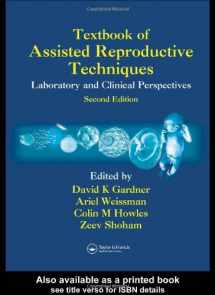
Textbook of Assisted Reproductive Techniques: Laboratory and Clinical Perspectives
Book details
Summary
Description
Updated and expanded, Textbook of Assisted Reproductive Techniques, Second Edition, Laboratory and Clinical Perspectives provides a authoritative manual for the entire IVF team. There are many books on IVF procedure, but none have combined the laboratory and clinical aspects to cover the subject so comprehensively. The book brings together leading medical and scientific experts to describe, in a clear and concise manner, the hows, whys, and reasoning behind ART.
The laboratory procedures section provides step-by-step how-tos for setting up the ART laboratory, covering everything that has to do with surroundings, equipment, conditions, quality control, and accreditation for the laboratory. The clinical techniques section discusses patient care from investigation to management to complications. New chapters cover: stem cells, genetic analysis, the role of the nurse, stress and outcomes, management of hydrosalpinx, prognostic assessment of ovarian reserve, quality management, setting up a national registry, health economic aspects, fertility preservation strategies, vitrification of oocytes, and more.
One of the things that makes this book so special is its contributors, all of whom are world leaders in the field and experts in their specific topic. The information is presented in a highly visual manner, making methods and protocols easy to find and understand. The book gives research fellows insight into technical developments, provides clinical and scientific teams with the A to Zs of setting up an embryology laboratory, and supplies seasoned professionals with a review of the newest techniques and advances.


We would LOVE it if you could help us and other readers by reviewing the book
Book review



